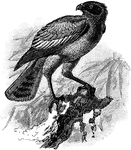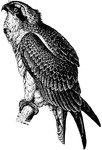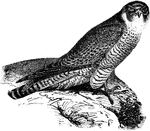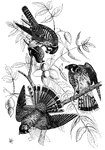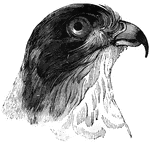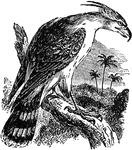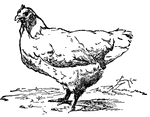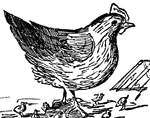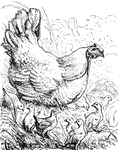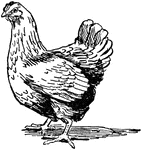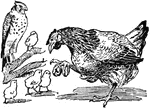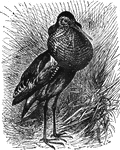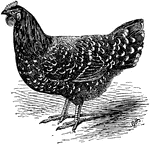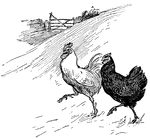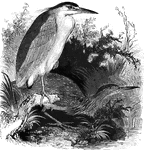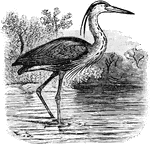134 illustrations of birds including: hammer, harpy, harrier, hawk, heron, hoopoe, house-martin, humming bird, ibijau, ibis, and indigo bird

Pair of Silver-Spangled Hamburgs
Hamburgs are considered to be excellent egg producers. They are small in size and are capable of flight.
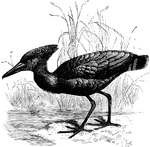
Hammerhead Standing Near Water
"Scopus umbretta, the Hammerhead, of Madagascar and a large part of the Ethiopian Range, is purplish-brown,…
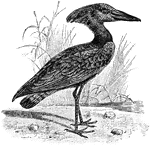
Hammerkop
The Hammerkop (Scopus umbretta) is a wading bird in the Scopidae family named for the shape of its crest…
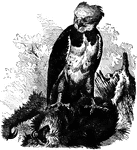
Harpy-Eagle (Harpyia Destructor)
"The Harpy or Crested Eagle is the model species of the genus to which it belongs. It measures nearly…

Harrier Ear Parts
"Circinae. Harriers. Face surrounded with an incomplete ruff (as in most owls); orifice of ear about…

American Marsh Hawk
Also known as the American harrier, the marsh hawk (C. Hudsonius) is nineteen to twenty-one…
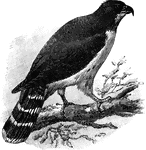
Cayenne Hawk
The tarsus is bare below; the nostrils are linear and oblique; the lores are bare; the bill is slender…
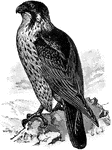
Duck Hawk
The Peregrine Falcon (Falco peregrinus), also known simply as the Peregrine, and historically as the…
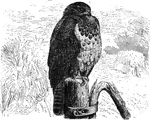
European Hawk
"Buteo vulgaris. hawk of Europe, Upper parts dark brown, very variable in shade according to season…

Marsh Hawk
Birds of prey usually have stout, hooked beaks and sharp, curved claws, fitting them for clutching and…

Marsh Hawk
A bird of the harriers, having an incomplete facial disk and large ear pars, as in some owls, a week…

Marsh Hawk
"Circus cyaneus hudsonius. American Marsh Hawk, Harrier. Blue hawk. Adult Male: In perfect plumage pale…

Night Hawk
Found in America, Mexico and the West Indies, this species averages nine to ten inches in length and…

Night Hawk
A bird found extensively in North America, belonging to the family of goatsuckers. It is a value for…
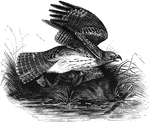
Red-Shouldered Hawk
Also known as the winter falcon, is found in California, Wisconsin, and South Carolina.
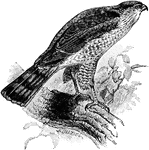
Sharp-Shinned Hawk
The adult female Sharp-Shinned Hawk (Accipiter striatus). The "Sharpie" is a small hawk in the Accipitridae…
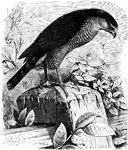
Sharp-shinned Hawk
"Accipiter fuscus. Sharp-shinned Hawk. "Pigeon" Hawk. Above, dark plumbeous, slate-color, or bluish-gray,…
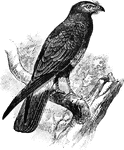
South American Hawk
They have circular nostrils with a central tubercle; the plumage of the adult is black with a white…
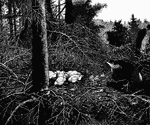
Two Sparrow Hawk in a Large Flat Nest of Twigs with Five Young Sparrow-Hawk Beside a Tree Trunk
"Accipiter nisus, the Sparrow-Hawk, which breeds throughout Europe, North Africa, Asia north of the…
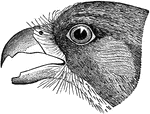
Sparrow Hawk
"Falco sparverius. Rusty-crowned Falcon. Sparrow Hawk. Adults: Crown ashy-blue, with a chestnut patch,…
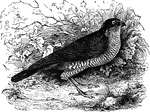
European Sparrowhawk
Resembles the American sparrow-hawk, feeding primarily on small birds and quadrupeds, as well as domesticated…
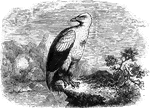
Vulture Hawk
Genus Gypohierax, is about the size of a goose, and is found in Western Africa, particularly…
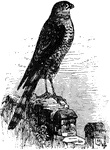
Sharp-shinned Hawk - Small
"Accipiter fuscus. Sharp-shinned Hawk. "Pigeon" Hawk. Above, dark plumbeous, slate-color, or bluish-gray,…

Blue Andalusian Hen
Andalusians are generally classified as "Mediterranean" chickens. They are relatively rare, and can…
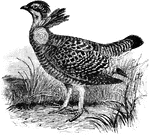
Prarie Hen
They have alulets or little wing like tufts of feathers on the sides of the neck which may have been…
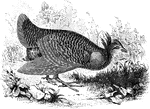
Prairie Hen
"Cupidonia cupido. Pinnated Grouse. Prairie Hen. Above, variegated with black, brown, tawny, or ochrey,…
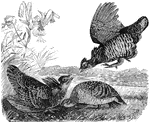
Prairie Hens
Prairie hens feed on grasshoppers, wheat, corn, seeds, and the buds of trees. They are also known as…

Heron
Herons are found on the edges of rivers, lakes and marshes and live on fishes, reptiles and sometimes…

Heron
Herons are found on the edges of rivers, lakes and marshes and live on fishes, reptiles and sometimes…

Heron
Herons are found on the edges of rivers, lakes and marshes and live on fishes, reptiles and sometimes…
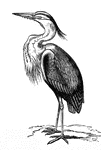
Heron
These wading birds mostly spend their time wading about in shallow water, feeding upon small fishes,…
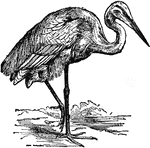
Heron
"Heron is the common name of birds of the genus Ardea. The herons are distinguished by having a long…
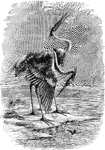
Heron
"Ardea. Great Herons. Of largest size, former well feathered all around. Tibia extensively denuded below.…

Heron
A great blue heron, commonly found in tropical areas like Florida. They belong to the order Grallatores,…
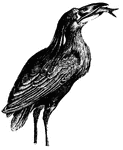
Boatbill Heron
This heron has a bill like an overturned boat. It also has a beautiful black crest that falls down behind…

Common Heron
"The most typical forms of Ardea (Common Heron) are large slaty-coloured birds, varied by black, rufous,…
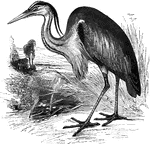
Gray Heron
Also known as the crested heron, the European gray heron ranges from Middle and Southern Europe into…
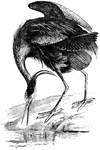
Great Blue Heron
"Ardea herodias. Great Blue Heron. Of large size, and varied dark colors, not dichromatic. Back without…


